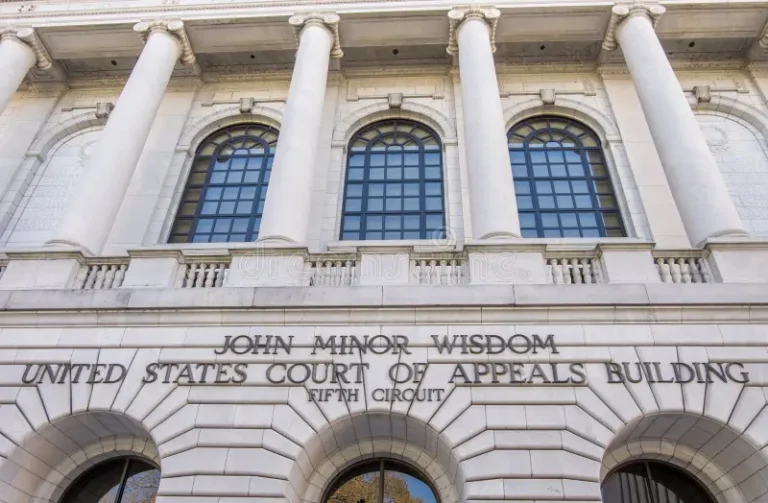We are experiencing a watershed moment in relation to sexual harassment: boldface names fall daily, and women are speaking up as never before. This is one of those moments when norms change, presenting a tremendous opportunity. Proposals that seemed unrealistic last year could now be taken seriously in the political sphere.
In The Guardian last weekend, Sharon Block and I outlined an agenda for bringing sexual harassment to light sooner, punishing it appropriately, and above all, preventing it in the first place. In the interest of furthering the conversation, this post elaborates on those ideas, and also aggregates several noteworthy articles proposing thoughtful reforms.
Along with the long-term work of building strong worker organizations, the following are some government policies to consider. Some of them would also serve to strengthen workers’ rights enforcement generally.
- Disallow non-disclosure agreements. The use of non-disclosure agreements in settlements involving workplace abuses should be limited, because of the broad public interests at stake (an idea I discussed in The Nation this spring). A bill proposed by New York State Senator Brad Hoylman would disallow settlement terms aimed at concealing details of harassment claims, as well as discrimination and wage and hour cases, a wise approach given the extent and public impact of workplace violations generally.
- Modify current anti-discrimination law. The 15-employee threshold for federal coverage should be reduced to cover more workplaces. In addition, the time frame for filing an EEOC charge should be extended beyond its current 180 days (or up to 300 depending on state and local agencies). By way of comparison, the FLSA’s statute of limitations is two years unless conduct is willful, and some state laws extend even further. Moreover, we have seen how long it takes many sexual harassment victims to come forward; a 180-day statute of limitations is plainly a mismatch with real world experience. Both of these suggested changes would require additional enforcement resources.
- Create strong penalties and qui tam or whistleblower statutes to enable and incentivize private lawyers to bring such cases, thereby also supplementing agency enforcement. Public agencies are resource-strapped, and enforcement by private plaintiffs plays a critical role. But the economics often don’t work for private lawyers, especially when it comes to low wage workers. Mandatory arbitration and class waiver agreements greatly exacerbate this situation, as Sharon Block and Celine McNicholas describe, because such agreements prevent individual sexual harassment and other cases from being aggregated into class actions, eliminating economies of scale. A qui tam or whistleblower law could go a long way to expand resources for public enforcement by enabling private lawyers to bring sexual harassment and other workplace justice cases. California’s Private Attorney General Act (PAGA) allows employees to file lawsuits to recover civil penalties on behalf of themselves, co-workers, and the state for labor law violations. False Claims Acts also allow whistleblowers in certain situations to sue on the government’s behalf and receive a portion of the recovery. States should consider passing laws, which would allow employees to sue on behalf of the state; for example, in New York, a legislative proposal called the Empowering People in Rights Enforcement (EMPIRE) Worker Protection Act would deputize workers to enforce certain labor statutes on behalf of the state, with the state retaining control of the suit, and receiving the majority of damages.
- Require notification of government agencies when settlements occur. Despite those mandatory training videos, companies have proven unable to police themselves. Given this history, the government should have at least an oversight role when matters of public interest are resolved. This could be done in various ways. For example, settlement of FLSA lawsuits generally requires court approval or review by the federal labor department; a similar structure could be established at the city, state, or federal level for discrimination and harassment settlements. Another model could be the Class Action Fairness Act, which requires that notice of any proposed settlement in a class action lawsuit be provided to the appropriate state officials who regulate an employer’s business, with state Attorneys General as a default. Either of these approaches would give key government actors notice and the ability to step in if a pattern of violations existed.
- Strengthen anti-retaliation laws. Usually, workers – even well-paid professionals – are afraid to report labor law violations of all kinds because they fear retaliation. Consider Angelina Jolie, who strides boldly into war-torn countries and refugee camps, yet did not denounce Harvey Weinstein until multiple public allegations were made by others. If Angelina Jolie was initially quiet, how much harder can it be for rank-and-file or low wage employees to speak up? Workers who report lawless behavior should be praised, not punished. They protect not only themselves, but also their co-workers. Accordingly, when employers retaliate against workers for reporting violations, there must be harsh and meaningful penalties and damages. And anti-retaliation laws should address whistleblowing’s impact on future employment by explicitly outlawing blacklisting, and by barring reprisals not only by the employer but also by “any other person,” as New York’s anti-retaliation labor law.
- Criminally prosecute workplace violations, including sexual assault, when appropriate. Finally, when crimes occur, the perpetrators should be prosecuted. Much of the conduct coming to light is, frankly, rape or sexual assault. True, the crime scene is the workplace, which may seem unorthodox to prosecutors: it may feel, in some inarticulable way, like a civil case, and the victims may be reluctant witnesses. Similar challenges once protected domestic abusers from prosecution – after all, domestic violence occurs in the home. Yet prosecutors now fully embrace prosecution of domestic violence as part of their mission — just as they should now embrace addressing workplace abuses as well. A quick Google search reveals a growing list of arrests: an ice cream store owner in Colorado; a heating oil company owner in Connecticut; a restaurant owner in the Pittsburgh area. A few well-publicized prosecutions in each state would go a long way toward educating the public, empowering workers, and deterring future violations.
In addition to the ideas I’ve outlined above, a number of writers have advanced insightful proposals for an effective policy agenda. Sharon Block has written here about the need for higher penalties and more enforcement resources, and both she and Andrew Strom highlight the need for unions and more democratic workplaces. Mark Joseph Stern in Slate suggests that statutes are needed to counteract years of problematic Supreme Court jurisprudence, and Sandra Sperino and Suja A. Thomas in the New York Times point to the need for statutory revisions to correct overly narrow approaches by federal courts over time. Industry-specific solutions have been suggested too, including eliminating the tipped wage in restaurants, and creating specific protections for hotel housekeepers, including a panic button, as in a new Chicago law.
There is no silver bullet to end workplace abuse, and any successful approach should combine some or all of the measures described above. The important thing now is to seize the moment and take concrete action so that women can do their jobs in peace.










Daily News & Commentary
Start your day with our roundup of the latest labor developments. See all
December 11
In today’s News and Commentary, Biden’s NLRB pick heads to Senate vote, DOL settles a farmworker lawsuit, and a federal judge blocks Albertsons-Kroger merger. Democrats have moved to expedite re-confirmation proceedings for NLRB Chair Lauren McFerran, which would grant her another five years on the Board. If the Democrats succeed in finding 50 Senate votes […]
December 10
In today’s News and Commentary, advocacy groups lay out demands for Lori Chavez-DeRemer at DOL, a German union leader calls for ending the country’s debt brake, Teamsters give Amazon a deadline to agree to bargaining dates, and graduates of coding bootcamps face a labor market reshaped by the rise of AI. Worker advocacy groups have […]
December 9
Teamsters file charges against Costco; a sanitation contractor is fined child labor law violations, and workers give VW an ultimatum ahead of the latest negotiation attempts
December 8
Massachusetts rideshare drivers prepare to unionize; Starbucks and Nestlé supply chains use child labor, report says.
December 6
In today’s news and commentary, DOL attempts to abolish subminimum wage for workers with disabilities, AFGE reaches remote work agreement with SSA, and George Washington University resident doctors vote to strike. This week, the Department of Labor proposed a rule to abolish the Fair Labor Standards Act’s Section 14(c) program, which allows employers to pay […]
December 4
South Korea’s largest labor union began a general strike calling for the President’s removal, a Wisconsin judge reinstated bargaining rights for the state’s public sector workers, and the NLRB issued another ruling against Starbucks for anti-union practices.